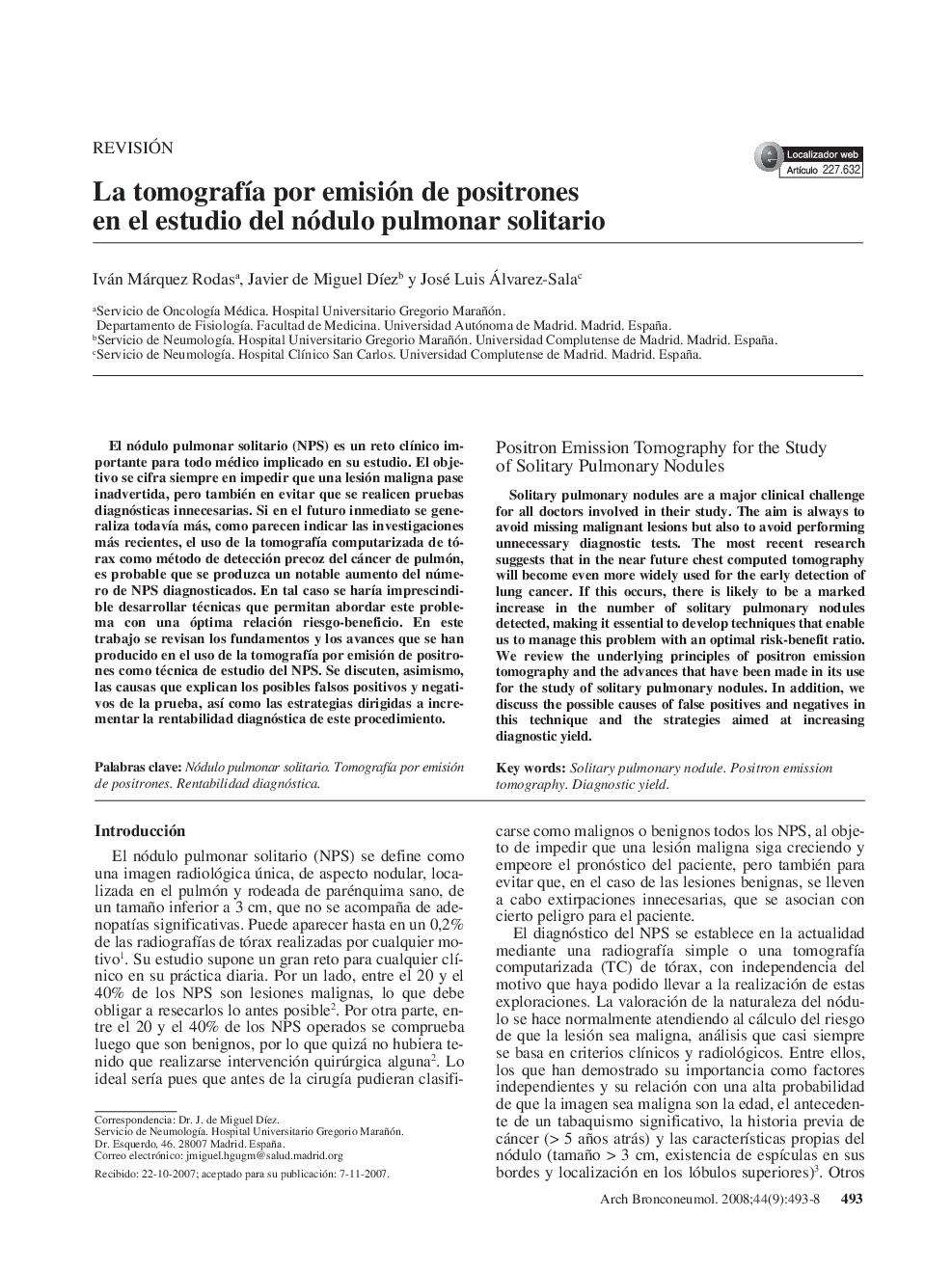| Article ID | Journal | Published Year | Pages | File Type |
|---|---|---|---|---|
| 4204371 | Archivos de Bronconeumología | 2008 | 6 Pages |
Abstract
Solitary pulmonary nodules are a major clinical challenge for all doctors involved in their study. The aim is always to avoid missing malignant lesions but also to avoid performing unnecessary diagnostic tests. The most recent research suggests that in the near future chest computed tomography will become even more widely used for the early detection of lung cancer. If this occurs, there is likely to be a marked increase in the number of solitary pulmonary nodules detected, making it essential to develop techniques that enable us to manage this problem with an optimal risk-benefit ratio. We review the underlying principles of positron emission tomography and the advances that have been made in its use for the study of solitary pulmonary nodules. In addition, we discuss the possible causes of false positives and negatives in this technique and the strategies aimed at increasing diagnostic yield.
Keywords
Related Topics
Health Sciences
Medicine and Dentistry
Pulmonary and Respiratory Medicine
Authors
Iván Márquez Rodas, Javier de Miguel DÃez, José Luis Álvarez-Sala,
